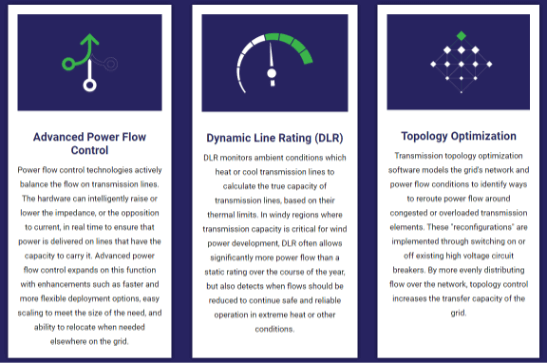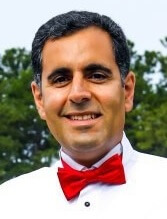Introducing the New IEEE Smart Grid Panel Series!
Written by Kaveh Aflaki
The vision of the IEEE Smart Grid as the world’s largest and most comprehensive professional association in Smart Grid is to bring together IEEE’s broad array of technical societies and organizations through collaboration to encourage the successful rollout of technologically advanced, environment-friendly, and secure smart-grid networks around the world. To achieve this vision, in 2021, IEEE Smart Grid formalized a process to create virtual panel discussion sessions that provide an opportunity for industry experts to share information and discuss industry events or challenges such as solving them or presenting strategies. The virtual panel discussions are recorded and available on the IEEE Smart Grid Resource Center. Read a summary of the latest panel.
Introducing IEEE Smart Grid Virtual Panel Discussions
The vision of the IEEE Smart Grid as the world’s largest and most comprehensive professional association in Smart Grid is to bring together IEEE’s broad array of technical societies and organizations through collaboration to encourage the successful rollout of technologically advanced, environment-friendly, and secure smart-grid networks around the world. To achieve this vision, in 2021, IEEE Smart Grid formalized a process to create virtual panel discussion sessions that provide an opportunity for industry experts to share information and discuss industry events or challenges such as solving them or presenting strategies. The virtual panel discussions are recorded and available on the IEEE Smart Grid Resource Center. Through these virtual panel discussions, the moderator and panelists are encouraged to create additional based on the discussion and questions asked by the audience. This additional content could be (i) eBulletin article/issue, (ii) white paper, (iii) panel overview, or (iv) summary of the panel deliberations. Contact the IEEE Smart Grid community to submit a virtual panel discussion proposal. While IEEE Smart Grid has hosted panels before, the first IEEE Smart Grid using this formalized process was held on November 4, 2021 and discussed the topic of “Renewable Integration in the US” and the panel overview is below. To stream the virtual panel event, click here. To apply to moderate or propose a panel, please go to IEEE Smart Grid Panel Proposal.
Overview
With the US intensifying efforts to reduce carbon emissions and combat climate change, the ability to integrate renewables onto the grid has become even more critical. However, there are key barriers that stand in the way of developers when attempting to connect renewable projects to the grid. In early November, thought leaders in the renewables space sat down with IEEE Smart Grid panel organization chair Dr. Kaveh Aflaki to discuss the requisite changes in the way transmission is planned, paid for, and built to integrate renewables at scale and hit climate targets.
Intro
On November 4, 2021, a panel of thought leaders from leading renewable energy development firms, smart grid companies, and consulting firms came together to discuss opportunities and challenges surrounding renewable integration within the US as part of the IEEE Green Energy Talks Series. Dr. Kaveh Aflaki, Manager of Customer Solutions at Smart Wires and Chair of IEEE Smart Grid Steering Committee panel organization, moderated the group discussion. The panelist group included:
- Arash Ghodsian, Sr. Director Transmission & Policy, EDF Renewables
- Hamed Heyhat, Vice President & General Manager, North America, Honeywell - Smart Energy
- Rhonda Peters, Principal, InterTran Energy Consulting
- Deepesh Rana, Director Transmission & Interconnection, Apex Clean Energy
- Carlos Rodriguez, Senior Vice President Interconnections and Grid Analysis, Invenergy
The panelists discussed ways to combat the trend of increasing time spent in the interconnection queue, interconnection-related network upgrade funding mechanisms, RTO/ISO strategies for solving grid constraints, and developers’ influence over which network upgrades are selected. At the highest level, the panel emphasized the need to build transmission while optimizing existing transmission assets.
An Influx of Renewable Energy
As national and state climate efforts intensify, renewable portfolio standards increase, and the price of renewable energy continues to decrease, the number of proposed renewable projects across the country has climbed sharply. As Arash Ghodsian noted, less than 10 years ago, MISO’s renewable queue totaled less than 10 GW while it now sits above 100 GW. This increase is reflected in the interconnection queues of RTOs/ISOs across the US. However, the amount of renewable energy interconnecting to the grid does not reflect the same degree of inflection. As detailed in a recent study conducted by Lawrence Berkeley National Laboratory, queue times are lengthening while only 20% of projects that now enter the queue ever make it to commercialization. The panelists repeatedly stated their agreement that the key barriers to interconnection could be traced back to flawed transmission planning and interconnection processes.
Broken Planning and Interconnection Processes
System operators (SOs) are largely responsible for two key processes: transmission planning and generation interconnection. Although system operators and other industry stakeholders currently think of these processes as divorced, Dr. Rhonda Peters and other panelists echoed the sentiment that they are inherently connected. Deepesh Rana stated that this holds true not only for regional planning processes but also for interregional planning. Dr. Rhonda Peters went on to explain that the separation of these two planning processes results in the underestimation of future renewable integration in planning models used by the transmission planning groups at SOs. This inaccuracy results in an exclusion of backbone transmission upgrades in future transmission planning that would allow for the integration of realistic amounts of future renewables. Thus, when developers propose new generation projects to the RTO, they become responsible for funding these backbone transmission upgrades as a prerequisite to connecting their projects. These upgrades generally cost tens of millions of dollars and often make projects economically infeasible for the developer. Frequently when developers are assigned these backbone transmission upgrades, they end up dropping out of the queue, and neither the renewable project nor the transmission upgrade are built.
Deepesh Rana described how this planning gap highlights the need for the “marriage of interconnection studies with regional transmission planning studies” and for these studies to incorporate a “realistic representation of what future generation looks like.” The panelists commended FERC on recently putting forth the Advance Notice of Proposed Rulemaking (ANOPR) on Transmission Planning and Generation Interconnection, which gives stakeholders the opportunity to propose the changes they think would allow transmission to be more rapidly built and optimized. The panelists hope that the ANOPR will result in the elimination of the planning gaps above.
Optimizing Existing Transmission Assets
While panelists agreed on the fact that transmission systems need to be expanded, they also agreed that many renewable projects in the queue could be more quickly integrated at a lower cost if existing transmission assets were optimized. When asked about existing technologies that will enable transmission owners and RTOs/ISOs to better utilize existing infrastructure and speed up the integration of new renewable resources, Carlos Rodriguez emphasized the promise of Grid Enhancing Technologies (GETs). Rodriguez gave examples of Modular Power Flow Control (MPFC), Dynamic Line Rating (DLR), and Topology Optimization technologies, all of which are hardware plus software solutions that he believes are “poised to increase the capacity of the grid.”

Figure 1. Advance Power Flow Control, Dynamic Line Rating (DLR) and Topology Optimization.
As noted by Arash Ghodsian, system operators (SOs) are not currently including GETs as potential solutions in their generation interconnection studies. However, given the support for GETs during recent FERC conferences and the proven benefits of including these technologies into planning models, he believes GETs will be included in these models soon. Deepesh Rana stated that he believes, just as with modeling Storage, no big progress will be made until a FERC order is put in place that requires SOs to model GETs.
Developer Influence on Network Upgrades
Carlos Rodriguez noted that most SOs have a window in their queue processes where developers can provide comments on the results of system impact and system feasibility studies. He stated that while SOs are generally receptive to suggestions made by developers, they need to be given good grid data from the SOs to study alternatives to the network upgrades they are assigned. Dr. Rhonda Peters noted that MISO is a leader in this area, given that they have published an online point of interconnection tool that developers can use to model a project’s impact on the grid. She stated that this sort of tool is a step in the right direction toward developers having more visibility into where the grid has the capacity and that other SOs should replicate this model.
Carlos Rodriguez indicated that developers had not had as much success proposing GETs as alternatives to assigned network upgrades. Deepesh Rana offered that this might be because of the perceived difficultly of reflecting GETs in planning models, yet Dr. Rhonda Peters countered that some GETs are more challenging to model than others.
Conclusion
With COP26 in Glasgow underway, panelists were asked what changes they would like to see most in the grid space. All reaffirmed their emphasis on the build-out and optimization of transmission, agreeing that transmission is likely the key limiting factor stopping the US from reaching its climate goals. Dr. Rhonda Peters hopes that the ANOPR will spark a shift in culture around how we address transmission, aiming for a more collaborative and holistic planning approach. Arash Ghodsian echoed this desire for a culture shift, emphasizing the need for the sector to be open-minded to policy changes. At the conclusion of the session conclusion, Dr. Peters summed the sentiment of the statements made by the panelists by affirming that all the other components to enable a transformation of the transmission space exist today (technology, engineering, financing, business expertise) and that policy is the primary remaining barrier to positive change. The panelists and related stakeholders will continue to push for innovation in the way transmission is planned, paid for, and built with the end goal of integrating renewables at scale and hitting climate targets.
Green Energy Talks Series
IEEE Smart Grid panels give thought leaders in the electricity sector the opportunity to debate the most relevant energy topics of today. Panel organization chair, Dr. Kaveh Aflaki, brings together experts in relevant fields and organizes the discussions around key opportunities or challenges related to the energy transition through the Green Energy Talks Series part of the IEEE Smart Grid Panel Session programs. These discussions are made available to the public and can be watched in live or recorded format at the IEEE Smart Grid Resource Center.
To view all articles in this issue, please go to December 2021 eNewsletter. For a downloadable copy, please visit the IEEE Smart Grid Resource Center.

To have the Bulletin delivered monthly to your inbox, join the IEEE Smart Grid Community.
Past Issues
To view archived articles, and issues, which deliver rich insight into the forces shaping the future of the smart grid. Older Bulletins (formerly eNewsletter) can be found here. To download full issues, visit the publications section of the IEEE Smart Grid Resource Center.




